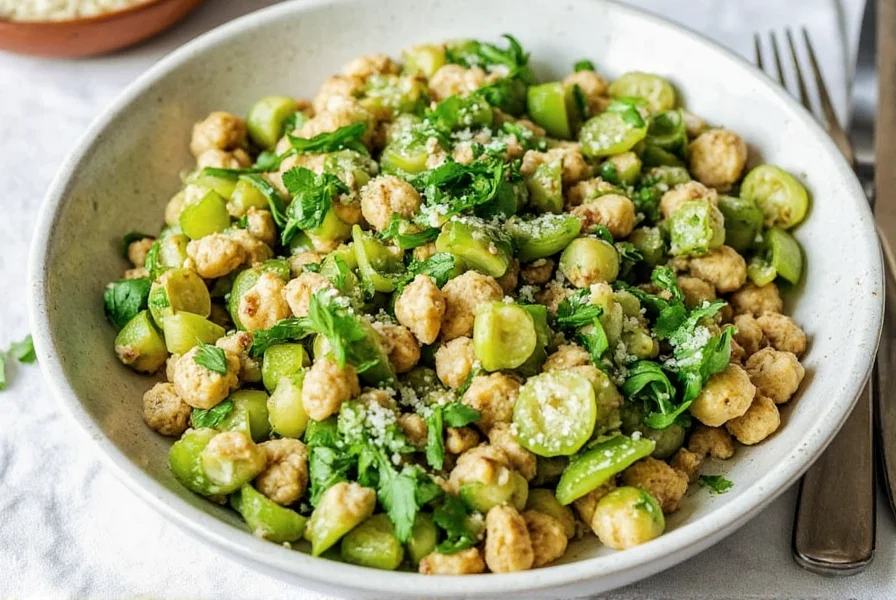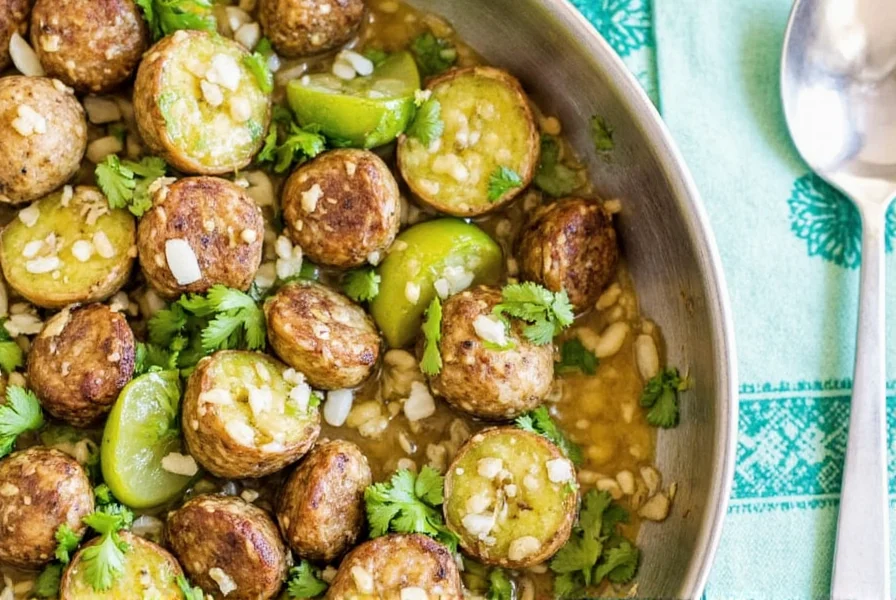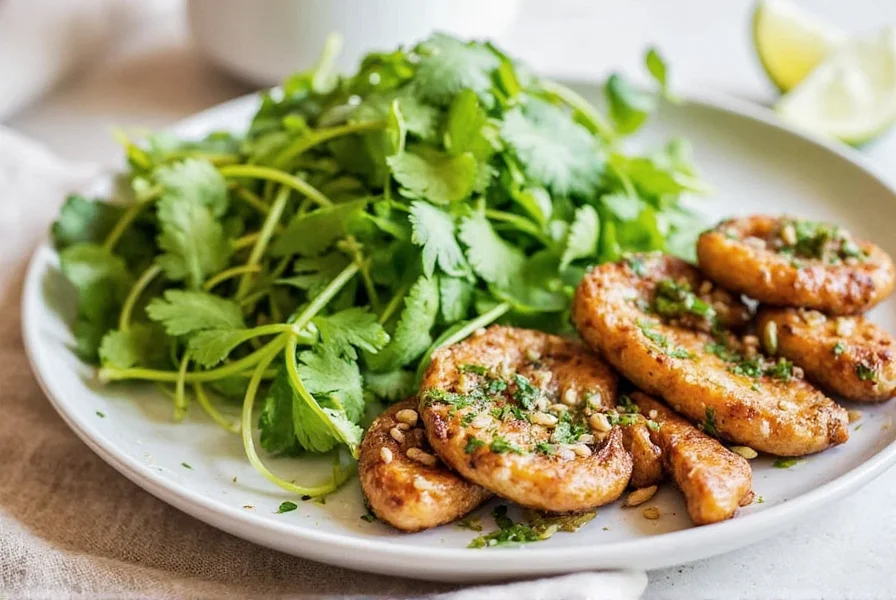When searching for fresh coriander recipes for beginners, understanding this herb's dual nature is essential. The leaves (cilantro) offer a bright, citrusy note perfect for finishing dishes, while the seeds (coriander) provide warm, nutty depth when toasted. This distinction explains why coriander recipes for Indian cuisine often use both forms, creating complex flavor layers impossible with substitutes.
Why Coriander Elevates Everyday Cooking
Coriander's unique chemical composition contains aldehydes that create its distinctive flavor profile. Unlike many herbs, it bridges culinary traditions—from Mexican coriander lime rice recipes to Thai coconut curry with fresh coriander. Food scientists note that crushing coriander seeds releases linalool, enhancing aroma by 40% compared to whole seeds. This explains why authentic coriander paste recipes always begin with freshly ground seeds.
Essential Handling Techniques
Preserve coriander's volatile oils with these professional methods:
| Form | Storage Method | Maximum Freshness |
|---|---|---|
| Whole seeds | Airtight container away from light | 1 year |
| Ground seeds | Refrigerated in dark glass | 3 months |
| Fresh leaves | Stem ends in water, covered with bag | 10 days |
Never wash coriander before storage—moisture accelerates spoilage. For quick coriander recipes for weeknight dinners, freeze chopped leaves in ice cube trays with olive oil.

Signature Coriander Recipes by Cuisine
These tested coriander recipes with common ingredients showcase the herb's versatility. Each maintains authentic flavor while accommodating home kitchen limitations.
Indian Coriander Chicken (Dhaniwal Korma)
This Punjabi specialty demonstrates how to use coriander in rich sauces without bitterness. The secret lies in seed-to-leaf ratio:
- 2 lbs chicken thighs (bone-in for flavor)
- 1 cup fresh coriander, finely chopped
- 2 tbsp coriander seeds, dry-toasted
- 1 tbsp ginger-garlic paste
- ½ cup yogurt
Method: Grind toasted seeds with yogurt. Marinate chicken 2 hours. Sauté ginger paste, add marinated chicken, cook until 70% done. Stir in fresh coriander during last 5 minutes. This authentic Indian coriander chicken recipe prevents leaf degradation while maximizing flavor infusion.
Mexican Coriander Lime Rice
A staple in central Mexico, this simple coriander recipes for beginners transforms basic rice:
- 1½ cups long-grain rice
- 1 bunch fresh coriander (stems included)
- 3 cups chicken broth
- 2 limes (zest and juice)
Method: Blend coriander stems, 1 lime, and broth until smooth. Use this liquid for cooking rice. Fold in leaves and zest after cooking. The stem puree delivers deeper flavor than leaf-only versions.

Avoiding Common Coriander Mistakes
Even experienced cooks make these errors with coriander recipes for summer dishes:
- Overcooking leaves: Adds soapy flavor (due to aldehyde breakdown). Always add fresh coriander at the end.
- Burning seeds: Toast in dry pan 2-3 minutes max until fragrant. Burnt seeds turn bitter.
- Using dried代替 fresh: Dried coriander leaves lose 90% of volatile oils. Use seeds for dried applications.
When You Run Out: Smart Substitutions
For easy coriander recipes with common ingredients, try these swaps:
- Fresh leaves: Equal parts parsley + ¼ tsp lemon zest (works for salsas)
- Ground seeds: ¾ tsp cumin + ¼ tsp caraway (for spice blends)
- Whole seeds: Fennel seeds (toast first for similar nuttiness)
Note: Substitutions never replicate true coriander flavor but maintain dish structure.
Maximizing Flavor in Every Dish
Professional chefs use these techniques in coriander paste recipes for quick meals:
- Remove thick stems from leaves—they contain bitter compounds
- Chop with ceramic knife (metal accelerates oxidation)
- For chutneys, add 1 tsp sugar to neutralize bitterness in some palates
- Store leftover paste with oil layer on top to prevent browning
Frequently Asked Questions
Can I use dried coriander instead of fresh in recipes?
Dried coriander leaves don't substitute well for fresh due to significant flavor loss. Use 1 teaspoon dried coriander seeds (not leaves) to replace 1 tablespoon fresh leaves in cooked dishes, but fresh coriander recipes always require the fresh herb for finishing.
Why does coriander taste soapy to some people?
Approximately 20% of people have a genetic variation (OR6A2 gene) that makes them perceive coriander's aldehydes as soapy. For these individuals, using coriander seeds instead of leaves often provides similar flavor without the soapy note.
How do I prevent coriander from turning black in recipes?
Coriander darkens due to oxidation. Prevent this by: 1) Adding acid (lime juice) immediately after chopping, 2) Storing in airtight container with plastic wrap touching the surface, 3) Never using aluminum utensils which accelerate browning.
What's the difference between coriander and cilantro?
Coriander and cilantro come from the same plant (Coriandrum sativum). 'Cilantro' refers to the fresh leaves/stems in American English, while 'coriander' describes the dried seeds globally. In British English, 'coriander' refers to both forms.











 浙公网安备
33010002000092号
浙公网安备
33010002000092号 浙B2-20120091-4
浙B2-20120091-4